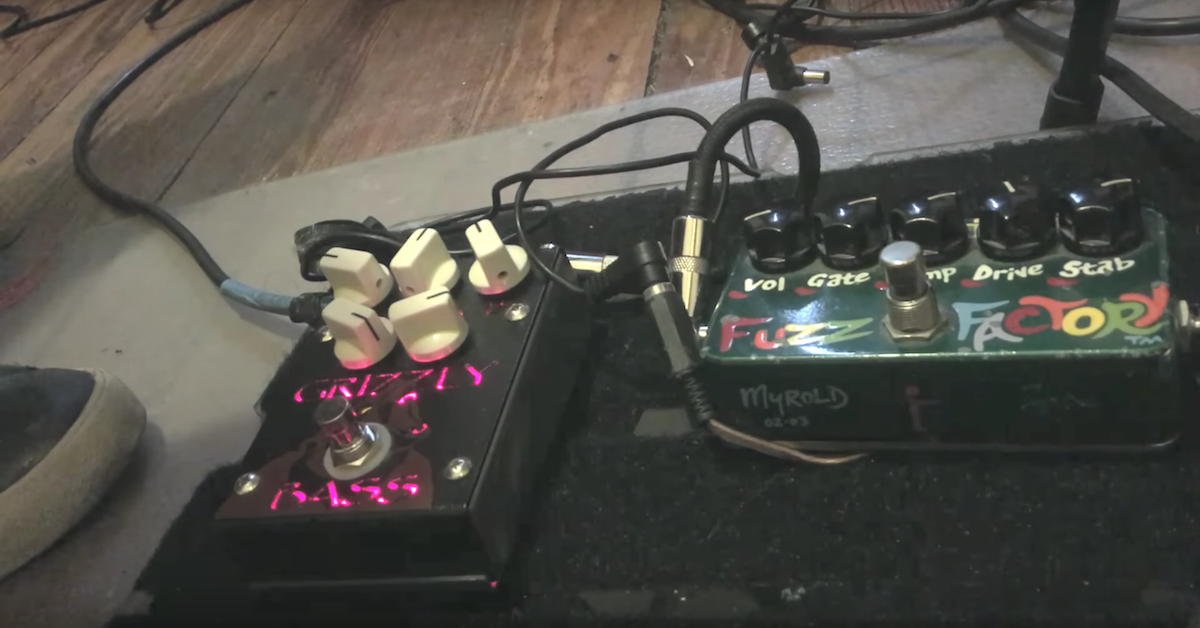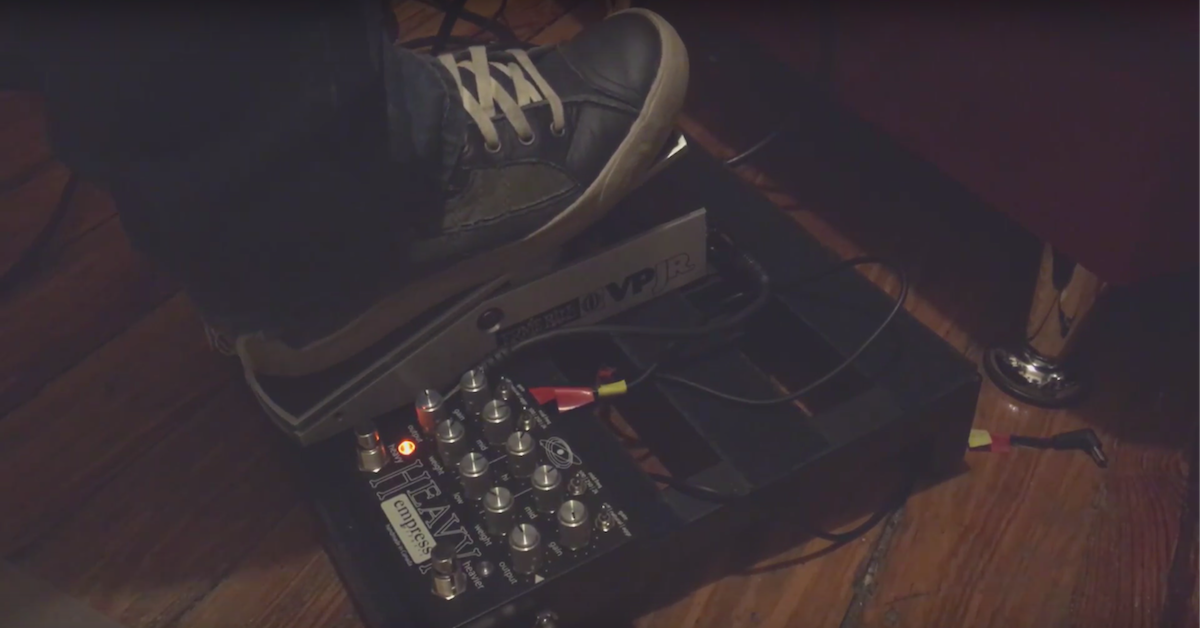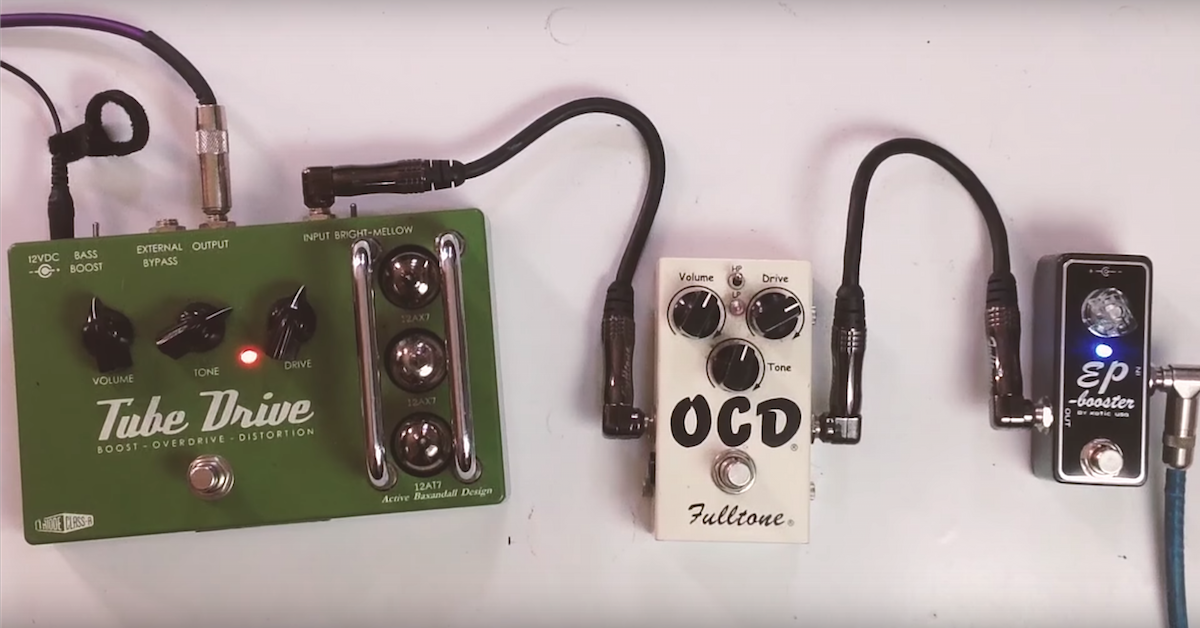Amp Overdrive vs Pedal Overdrive
Article Content
Every guitarist knows the legend about how tube amps break up. But not every engineer (or guitarist for that matter) has experienced the variance in sound between pedal overdrive and amp overdrive.
The Future Freaks Me Out
The modern thought is that pedals sound just like overdriven amps. The idea has become that you use a clean amp with an overdrive pedal. Many don’t even A/B the differences. Guitarists show up with a pedalboard with labeled “flavors” on them.
When trying to make the very best production, it’s good to know the difference not only between pedals but amp overdrive. Whether you realize it or not, you’re mixing while you’re recording. The decisions you make now affect the final outcome.
Soap Box
The intent of this article is not to state one is better than the other. It’s to show the difference between the two so you can choose effectively.
As much as pedals claim to authentically recreate the sound of a cranked amp, they don’t. That’s not a bad thing though. This gives us a much wider range of tones to choose from. Once you start to think of things this way, pedals become less frustrating and more fun.
I have at least five overdrive pedals in my collection. They all sound different. None of them, except for one, comes close to sounding like an amp.
Salt N Pepa
When I’m producing a track I’m not sitting there debating the difference in a Klon Centaur and a copy versus a tube amp. I simply need to decide if I need that flavor.
Let’s talk about the differences.
Compression
The compression is very different on a loud tube amp than on any pedal.
There is less compression from an amp. It gets squishy but in more of a limiter kind of fashion rather than compressing the whole signal.
If you want more dynamics, a cranked amp is your friend.
If you need less dynamics a pedal is your BFF.
For the record, when I talk about a loud tube amp, I’m talking about a non-master volume amp. I’m not discussing fizzy preamp gain. Not in my house!
GQ
Non-master volume amps have a wider frequency span when pushed. As you push the volume up, you’ll notice the low end is still earthy and the high end shimmers.
On pedals, the freq (shorted biz term for frequency. Fancy right?) range gets narrowed. It’s most noticeable in the low end. Almost every overdrive pedal I’ve used chops a bit of the low end off.
If you want lows that rattle your gut (I’m not talking muddy undefined lows), a tube amp is your friend.
If you want tighter low end and more squished highs a pedal will excel at the task.
Sustain
There is a mysterious thing that happens when an amp is almost dimed, especially if you’re in the room together. It’s symbiotic. They start to become one instrument. Sure you can crank it up with a pedal too, but it’s not the same. (Sounding like an old-timer?)
I think that because of the way a real amp compresses and doesn’t narrow the frequencies, it’s really allowed to get all freaky with the guitar pickups. We’re talking full range grit here folks.
This is not a polite gathering for networking professionals. It’s a rally for the freaks that want the world to hear and understand injustices.
Of course, sometimes you have to put a nice shirt on and go to dinner with the family. Ya know, keep it calm for the grandparents. This is where options come in.
I recorded a few examples of amp overdrive and pedal overdrive.
I used an early 90’s stock American Stratocaster into a Headstrong Lil’ King. The overdrive pedal was a Effectrode Tube Drive.
Example 1: Guitar → Amp: Volume on 4
You can hear the amp just starting to break up.
—
Example 2: Guitar → Amp: Volume on 6
The amp is really starting to work.
—
Example 3a: Guitar → Amp: Volume on 8
For me, this is a sweet spot for guitar amps. If I want it cleaner I can roll off my guitar volume knob.
—
Example 3b: Guitar → OD Pedals → Amp: Mimicking the gain of the amp on 8
Hear the tighter low end?
—
Example 4a: Guitar → Amp: Volume on 10
This is plain nasty!! No mincing your words with this tone.
—
Example 4b: Guitar → OD Pedals → Amp: Mimicking the gain of the amp on 10
Heavy, but not quite as in your face. Good chance this guitarist has had their shots… but, who knows about that other one.
Finish Line
The winner is… None! They all work great.
Capturing great guitar sound is not an easy task.
The more you know, the easier it is to track down the sound in your head.





